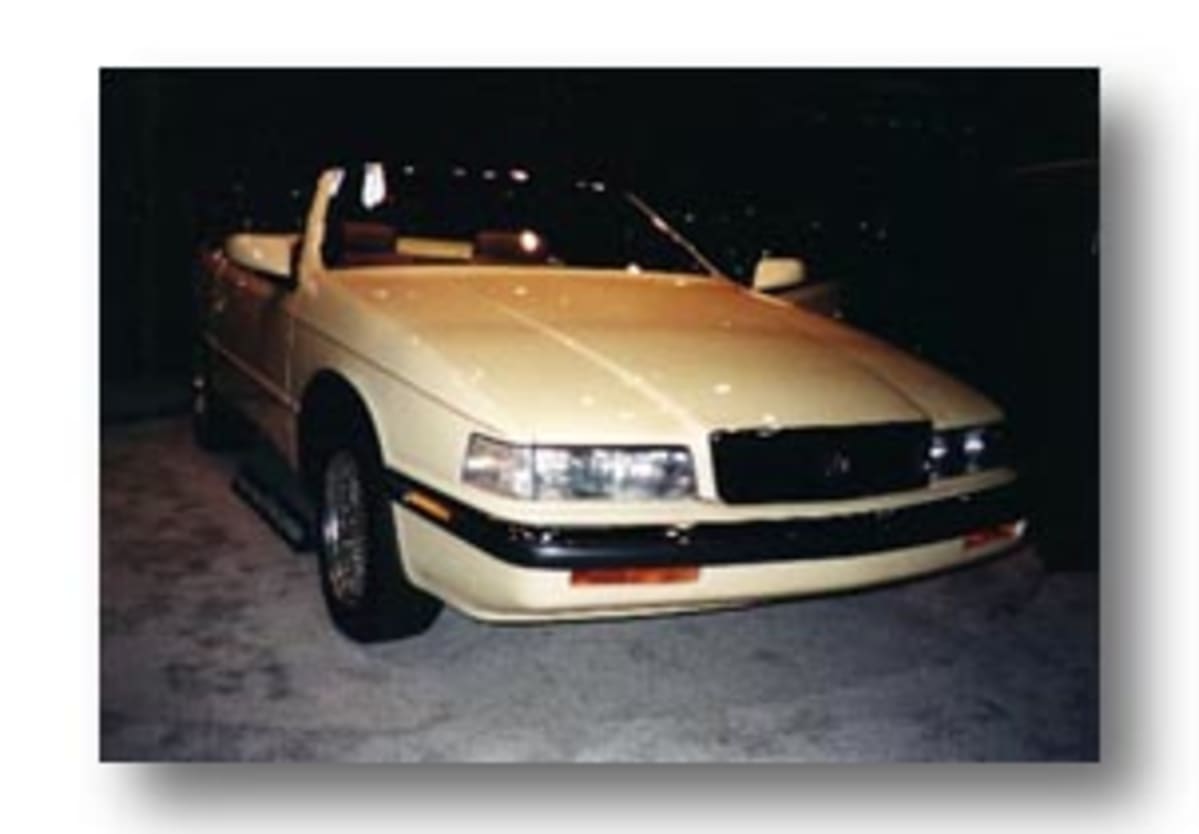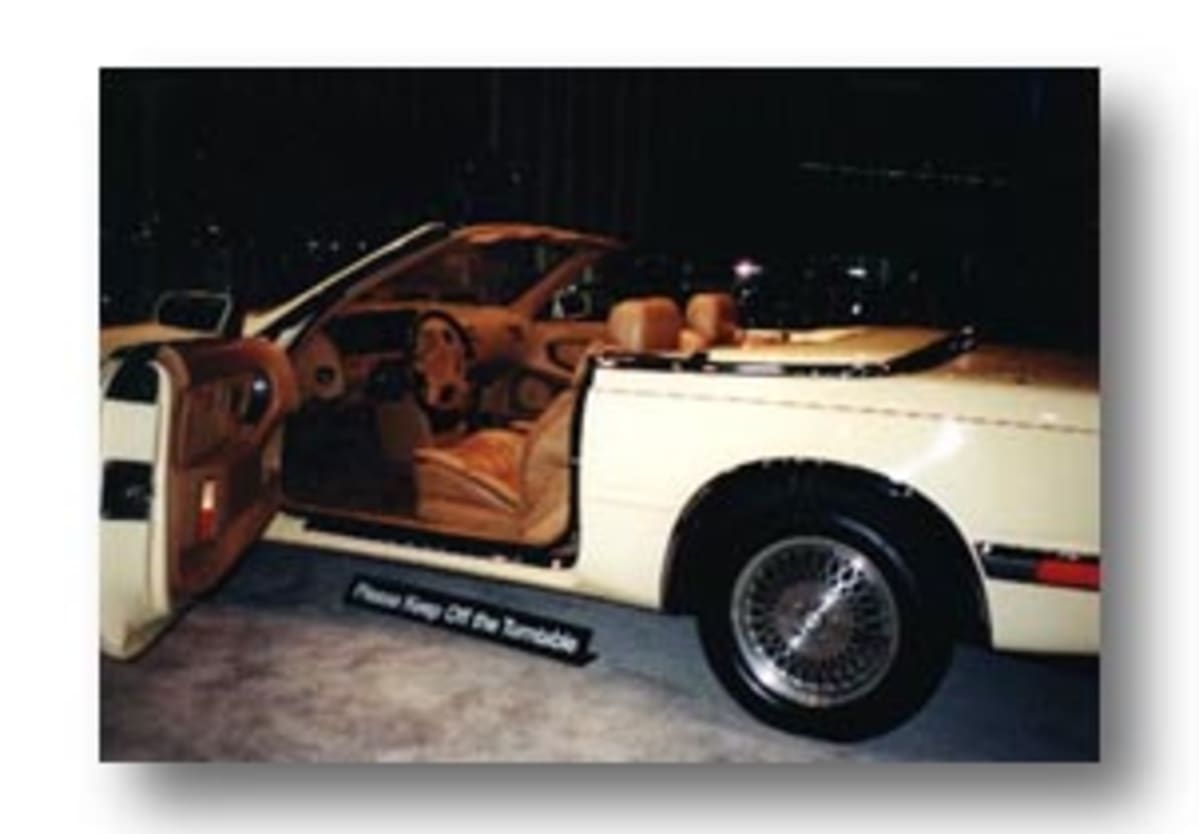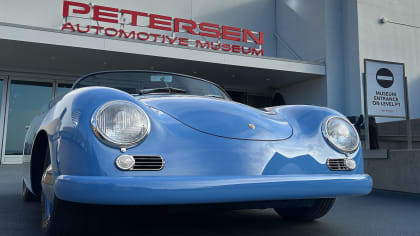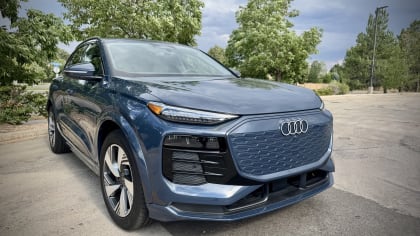Chrysler's TC by Maserati: Lee and Al, Together at Last
Published on Sat, Jan 9, 1988
By: Len Frank
“There ought to be a great story here somewhere, but I’m damned if I can find it. Let me start at the beginning and you look for it,” wrote Len Frank back in 1988.

There ought to be a great story here somewhere, but I’m damned if I can find it. Let me start at the beginning and you look for it.
In the beginning was the K-car. You remember: Plymouth Reliant, Dodge Aries, SOHC 2.2 liter engine, front wheel drive, transverse engine, struts in the front, dead axle in the rear, coil springs for bounce, rack and pinion steering. Styling lifted from the Dodge Aspen, the Plymouth Volare, and the dim past. It was certainly calculated to provide the minimum shock to a family in Peoria who were finally ready to trade in their decade-old slant-six powered appliance. Two door, four door, station wagon—how American. The rental companies ate them up. Motor Trend made them Car of the Year, but then they made the Aspen and Volare Car of the Year too.
Although the Iacocca crowd got most of the credit for the K, the only one of his ex-Ford gang who really had much to do with it (except for finding the money to put it into production) was Hal Sperlich. Sperlich, an engineering executive, had been the first transfer over from Ford to Chrysler a couple of years or so in advance of Iacocca, and it was hinted, to pave the way for Iacocca (who had talked about Bunkie Knudsen’s failure at Ford when he transferred from GM without a support group).
Now, in fairly quick order, the front and rear overhangs of the K were stretched and the Dodge 400 and Chrysler LeBaron came into being. Then the middle got pulled out like a bar of metallic taffy and, like magic, the New Yorker, Caravelle and Dodge 600 appeared. The Turismo/Charger coupes came along, with Shelby and DeTomaso versions for excitement. Remember the DeTomaso Dodge? Or was it a Plymouth? Or were those Omnis and Horizons under the skin?
Iacocca made more magic with the K, and the S and T-vans appeared. Am I starting to sound sarcastic? Cynical? Wait. Along came the Daytona Turbo Z and the Chrysler clone, Laser (now departed),then the new LeBaron GTS—which, from the bottom, looked strangely like all of the others. Not that there weren’t changes and improvements. Not all Ks (actually we’re talking about Es, Gs, Hs, Ms, etc., and even the KC limo) were created equal. Engines and gearboxes, shift linkages, every component got massaged at some time or another. Chrysler was, they said, the world’s leading user of turbos. Some cars got disc brakes all around, some got intercoolers and multi-point fuel injection to go with the turbos.

But no matter how much the cars changed there always seemed to be some commonality underneath, some raw edge, some unfinished quality, some lack of harmony. The steering wheels always seemed to be at the wrong angle or in the wrong relationship to the pedals or the seat. There was always some tacky touch just to remind you of the humble origins: torque steer, harsh ride, peculiar resonances, tire scrub, imitative styling that smacked of aftermarket add-ons, a look and general feeling that the high performance versions were a reinvention of the nickel rocket–cars for people who can’t tell the difference or just don’t care.
Not for a moment forgetting that the high performance versions really did go like hell and that they (really the Omni-based cars) were the scourge of Escort and Firehawk racing series, as well as NHRA and Bonneville and points west. The rental car guys still buy Ks by the case and Iacocca has made buying one an act of patriotism. Good short-term marketing but not much detail engineering.
So it was well over three years ago that we began to hear about this wondercar that was finally going to revive Chrysler’s reputation for engineering (itself a holdover from the very origins of Chrysler when Walter Percy Chrysler hired three consulting engineers named Zeder, Skelton, and Breer to design the first Model 70 in 1924). The Q-car (Chrysler’s internal designation for the TC) became a corporate reality in 1984, just a few months before the news got out.
OK. A couple of years ago (1986), on the opening day of the L.A. Auto Show, the first major auto show of the year, Lee Iacocca and Alejandro de Tomaso appeared to introduce the Chrysler-Maserati TC to the assembled press. I think that we, the fawning multitude, were generally favorable, but then we appear to be favorable to most new cars. There were a few malcontents who didn’t like the rear-quarter porthole in the removable top, but generally it was enthusiasm, optimism, and ebullience that carried the day. Iacocca and De Tomaso jutted their respective chins (de Tomaso had hurt his leg on a motorcycle—his industrial group owns Benelli and Moto Guzzi, as well as Innocenti, Lambretta, de Tomaso Automobili and Maserati). Real details about the car were sparse, but it was to have a 16-valve version of the ubiquitous 2.2 Chrysler. And there was a period there when I was having trouble telling whether the new car was going to have front or rear drive. Silly me.
In 1987 the TC was on display on the auto show circuit for all the world to see—ditto 88. So when Chrysler took a bunch of us to San Remo and the French Riviera what we were to see was not going to be a big surprise. Several things had happened since the car was first generally seen in86. Chrysler had gone shopping: they had increased their share in Maserati; they had purchased Lamborghini outright; and, not quite so peripherally as it might seem, had purchased AMC/Jeep (and a connection, no matter how tenuous, with Renault, who had finally decided not to bring in the Alpine A310 V6 turbo). And at the Frankfurt auto salon last fall, Iacocca himself, seconded by Bob Lutz (ex-Ford, ex-BMW), announced that Chrysler was going to export cars to
Europe, maybe 5,000 or 10,000 Daytonas, LeBarons, vans. How will they play in the big time?
Finally: Hal Sperlich quit. It was said his departure was over Iacocca’s reluctance to allow the development of genuinely new products.
Patience, we’re getting to the hardware.
First, Maserati: a wonderful name. The Maserati brothers had built some great racing cars starting in the `twenties, but were pretty much put out of action (except for a couple of wins at Indianapolis) by the Germans before WWII. They sold the company, lock, stock, and Borranis to the Orsi family—an industrial family group—soon after the war, and went off to start OSCA. The Orsis, with considerable infusions of cash and a lot of talented help, were able to get some wonderful racing cars built—the 300S and 450S sports cars, the 250F grand prix car, and finally the tipo60 and 61 “Birdcage” sports racers. There were others.
The passenger cars though were always held to be far downscale of the equivalent Ferraris (or Astons or Jaguars, for that matter). The last racing victory of note was the GP of South Africa in early 1967. What have you done for me lately?
The Orsis got tired of it all and made a complicated arrangement with Citroen (which was itself controlled by Michelin). The union produced some interesting cars—the Citroen SM with Maser V6 power, the mid-engined Bora with the big 4-cam V8 and similar Maser Merak with the SM engine. But in the end, Citroen let go and became part of Peugeot, and up stepped de Tomaso.
In essence, de Tomaso had Benelli buy a large block of Maserati stock, then got considerable help from the Italian government in paying the bills. The government, of course was interested in maximum employment and de Tomaso was all too happy to comply because it meant money that did not have to be spent on automatic tooling or other capital investment. He claims that great automobiles are the products of human hands rather than elaborate equipment. It makes a good story for those who still believe in the myth of superiority of the hand built car.
Somewhere above, de Tomaso Automobili was mentioned. They had produced the Mangusta which was later reworked and developed, with major help from Ford, into the Pantera, and produced for Ford in considerable numbers. That was in the late ‘sixties, early ‘seventies. The Pantera, a much better car than the Mangusta, had all manner of ills: structural problems, electrical problems, cooling system bothers, rust, rust, rust. What did you expect for ten grand? Ford just got finished settling lawsuits from the corrosion problem about two years ago. Cost to Ford has never been announced, but de Tomaso just shrugged.
Here it gets a little murky, but Iacocca and de Tomaso are good friends even after the Pantera experience. Iacocca describes the environment when he was at Ford as intensely competitive and entrepreneurial, and the overall Pantera experience must have hurt his career somewhat–notice that it is left out of his official autobiography. Chrysler has lent (or given) considerable money to de Tomaso’s group (why?), and has been paid off partially in stock and stock warrants. Why is this important when you just wanted to know whattleitdo?
The answer is coming. Notice that GM bought Lotus, Ford bought Aston-Martin and AC, Fiat took Ferrari and Alfa away from Ford, and now we have Chrysler buying up Lamborghini and a chunk of Maserati (makes you wonder who’s going to get Porsche).
There are a whole complex of answers to the why? of the above purchases, but it’s the obvious ones that are important. First, it’s the prestige of the purchased name (even though most Americans associate all of the above names with racing, they couldn’t really tell you where or in what form they race), second, assets considered, they were cheap, and third, in most cases the purchased companies give the purchaser a “skunk works”—a group of highly skilled creative people who can get things done outside the usual slow-moving bureaucratic processes.
It should allow four-cam, 32-valve Corvettes with 6 speed transmissions and active suspensions to happen almost immediately—which, in that case is just what appears to have happened.
Chrysler has recently announced that there will be a Lamborghini engine in Formula 1 for the first time (Lamborghini has had virtually no major racing record to date) late this year–a group of ex-Ferrari people had begun the project before Chrysler bought the firm—there will be a redesigned Countach (or replacement) for America to follow the $125,000 off-roader they plan to bring in very small numbers. So things are moving at that end. Why the delay on the Maserati, especially when the car was shown a couple of years back?
De Tomaso says the car was shown to the public too early. It did precede the public showing (by a few days) of the LeBaron coupe and convertible. It is obvious that the styling of both the LeBaron and TC emanate from the same source, and, in fact, they share a considerable number of structural and suspension pieces.
One has to guess that Chrysler looked to Maserati for help that was not quick to arrive. That Chrysler was committed to the car is clear, but de Tomaso says that it is just built by Maserati, he wants no credit for design, except for the engine modifications. Chrysler’s story is that the TC is a “cooperative, international effort… more Maserati than Chrysler.”
The cylinder head of the TC is cast in England by Cosworth and machined at Maserati on new equipment that will eventually be used to produce the 5-valve Maser BiTurbo head. No hand work here. I was unable to get an answer as to why the head is cast by Cosworth, since Maserati seems to produce lovely alloy castings for itself. As an aside, the cylinder head for the standard SOHC 2.2 is cast in Italy by a Fiat subsidiary.

The floor platform itself is cut by Chrysler from the J-sort-of-K (LeBaron GTC) unit with sill structure added by Maserati. Suspension arms and axles are either from the same LeBaron or G-sort-of-K Daytona. It has specially developed Fichtel and Sachs struts and shocks, and abs from Teves specific to the TC. The wheels are made by Fondmetal in Italy, who also do F1 wheels. Tires are Michelin.
The actual visible sheet metal, glass, and soft components are from Italy, Germany, and the U.S., and not shared with any other Chrysler product. The standard equipment hardtop is sheet molding compound (like a Corvette body) made in Germany. Considering that the cars we were allowed to drive were prototypes with certain construction compromises that we were told would not be made in the production cars, body finish and integrity were quite good.
Maserati mistakenly produced a wooden steering wheel for an early prototype, and you can imagine what the the D.O.T. would have to say about that—new wheels are leather covered–but it says something about problems in communication. Console, seat tracks and seat frames are modified Chrysler with upholstery and pads supplied by Maserati. The result is a considerable improvement on anything else with a Pentastar.
The 16-valve engine is interesting. Although it has always been a bit rough and noisy, the basic 2.2 Chrysler SOHC engine has always been reliable and surprisingly strong. The cooking versions weren’t especially powerful, but they didn’t seem to mind winding to a couple of thousand rpm past their power peak. And compared with the competition, the 2.5 liter GM and 2.3 liter Ford were much more the enthusiast unit. Suitably prepared for showroom stock racing with (ahem) optimized specification, I estimate the turbo/inter-cooled versions to have produced 230+ bhp, and done it with great reliability.
The 16-valve engine uses German forged Mahle pistons, an IHI turbo (Japanese, of course–also odd, because they had previously used Garrett, and have had years of exposure to Mitsubishi turbos. Nevertheless, IHI makes excellent units.) The camshafts were designed by Crane in Hallandale, Florida, but are machined in Modena. I was told that Maserati made the rods and crank, but that the rest of the engine–seals, bearings, pumps, etc., is Chrysler Turbo II. Like the seats, it’s the nicest modern hardware ever to wear the Pentastar.
The 5-speed gearbox is a German Getrag unit that I’m sure we’ll see in other applications in the future. It has, of all things, a synchro reverse, and is the slickest thing that Chrysler has ever used in a car—front or rear drive. It is not to be confused with the Getrag internals used in the Chrysler case in the late Turbo II applications.
The alternative engine is a slightly detuned (for smoothness) Turbo II used with the Torqueflite 3-speed automatic. Its exhaust system and intake are not shared with the Daytona Turbo Z that is the principle carriage for the engine.
But. If someone were to have blindfolded me and driven me off in the sohc automatic version of the TC,I would have known that I was in some Chrysler K derivation. The 16 valve car is another matter. Although it uses the same suspension tuning as the lower bhp automatic, the engine sound—a bit too muted for my tastes—is different. The car has healthy and useful acceleration—0-60 well under 9 seconds without strain, under 8 with a little determination is the guess—easy with the good mid-range. There was no time or place for any accurate testing. We were using the roads above Monaco on the Riviera, and traffic was a little thick, we were all a bit jet-lagged. But in one impromptu contest (Actually, since I didn’t have a guide with me, I was just trying to hang on to the 16 valve car in front of me so that I wouldn’t get lost. The driver in that one thought I was racing him. How silly of him.), I found the automatic indicating 110/112 with the 16 valve pulling away on an uphill straight. The cars exhibit a little too much roll for my taste (though it’s certainly not severe), and they was always a feeling of sitting on, not in, the car.
One of my biggest complaints with Chrysler’s chassis engineering in the past is that the high performance cars like the Daytona Turbo Z are very harsh—all the road surface is read through the St. Vitus dance of the body/chassis and its loosely assembled parts. The TC, happily, feels much more of a piece, with isolation and compliance far superior to that of any of its cousins.
Seating position is better too, but still not quite right (for my admittedly peculiar body). Minor control location doesn’t break any new ground, but does it really need to? The whole interior has that sumptuous Italian look that will probably sell more cars than multi-valve combustion chambers.
In fact, I question whether Chrysler/Maserati should not have made the 16-valve a sort of lighter weight super sports (it uses less boost than the 8-valve engine due to better combustion chamber design and I’m sure that the 200 bhp rating is just the beginning) with that excellent Getrag gearbox, slightly stiffer suspension, more aggressive tires, and a simpler, more sporting interior, and put the porthole top, elegant interior, automatic, power accessories, and SOHC engine together for the luxo crowd. As the car is now presented, it seems happiest in its sohc/auto form, and more than a bit compromised with the Maserati version of the engine. If you hadn’t guessed by now, the automatic comes only with the downrated SOHC Turbo II, the Getrag only with the Maserati 16 valve turbo.
What`s in a name? Why the apostrophe? Chrysler is going to grant, to a limited number of superior Chrysler/Plymouth dealers, a separate TC franchise, and if the car were called “Chrysler,” they would not have been able to do so. Still, something less cumbersome than “Chrysler’s TC by Maserati” must be out there.
Chrysler plans to have Maserati produce 30 cars a day once everything is up to speed. Some large part of the Chrysler investment went into new production and painting systems for Maserati, bringing them past the artisanal level. Another peripheral tale for whatever use you might make of it: Innocenti is the second largest producer of automobiles in Italy (after Fiat and its subsidiary companies). It was, when deTomaso bought it, an assembler and builder of BMC Minis and a version of the Sprite under license, but now produces its own fwd two box econocar using a Daihatsu 3-cyl. engine. Innocenti uses, if I remember the numbers correctly, twice the space to build a fifth the cars that Chrysler does in their St. Louis plant. Their total production, again, if memory serves, is 20/30,000 cars a year. Over and again I have been told that, because of the low profit levels, the econobox segment is the most difficult and the most dependent on large volumes. “Large volumes” starts somewhere over 100,000. How does deTomaso/Innocenti do it? Chrysler says that 75 percent of the cost of building the TC goes to Maserati.
To its credit, the TC is no cobbled up quasi-hot rod (like the American-engined Mangusta, other deTomasos, the various Bizzarinis and Isos—interestingly conceived but completely underdeveloped), but a fully developed and tested product that has undergone, says Chrysler, all of the durability, performance, and certification testing that a normal production car would. There should be considerable symbiosis between Chrysler and its Italian partners as Maserati makes use of the new quality control systems, production equipment, and a healthy infusion of cash, while Chrysler gets the fruits of Maserati’s engine technology and, maybe most important, the use of that great name.

The late Len Frank was the legendary co-host of “The Car Show”—the first and longest-running automotive broadcast program on the airwaves. Len was also a highly regarded journalist, having served in editorial roles with Motor Trend, Sports Car Graphic, Popular Mechanics, and a number of other publications. LA Car is proud to once again host “Look Down the Road – The Writings of Len Frank” within its pages. Special thanks to another long-time automotive journalist, Matt Stone, who has been serving as the curator of Len Frank’s archives after his passing in 1996 at the age of 60. During the next few months, we will be re-posting the entire collection of “Look Down the Road”, and you’ll be able to view them all in one location under the simple search term “Len Frank”. – Roy Nakano




